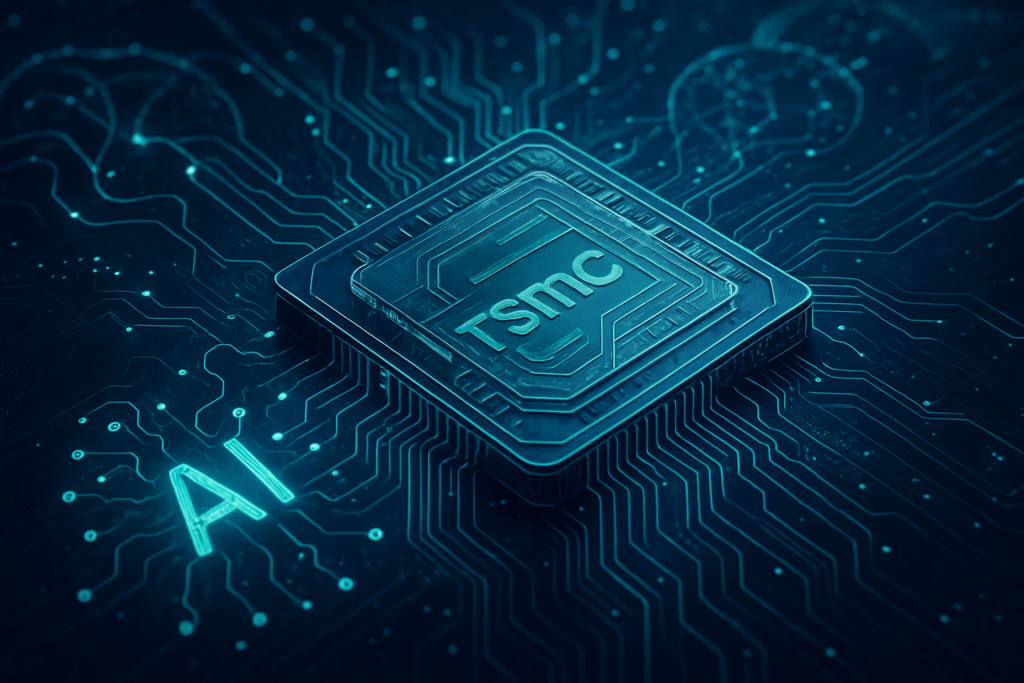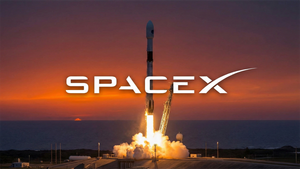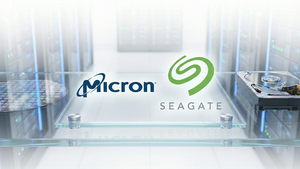
Taiwan Semiconductor Manufacturing Company (NYSE: TSM), or TSMC, stands as the undisputed titan in the global AI chip supply chain, serving as the foundational enabler for the ongoing artificial intelligence revolution. Its pervasive market dominance, relentless technological leadership, and profound impact on the AI industry underscore its critical role. As of Q2 2025, TSMC commanded an estimated 70.2% to 71% market share in the global pure-play wafer foundry market, a lead that only intensifies in the advanced AI chip segment. This near-monopoly position means that virtually every major AI breakthrough, from large language models to autonomous systems, is fundamentally powered by the silicon manufactured in TSMC's fabs.
The immediate significance of TSMC's role is profound: it directly accelerates the pace of AI innovation by producing increasingly powerful and efficient AI chips, enabling the development of next-generation AI accelerators and high-performance computing components. The company's robust financial and operational performance, including an anticipated 38% year-over-year revenue increase in Q3 2025 and AI-related semiconductors accounting for nearly 59% of its Q1 2025 total revenue, further validates the ongoing "AI supercycle." This dominance, however, also centralizes the AI hardware ecosystem, creating substantial barriers to entry for smaller firms and highlighting significant geopolitical vulnerabilities due to supply chain concentration.
Technical Prowess: The Engine of AI Advancement
TSMC's technological leadership is rooted in its continuous innovation across both process technology and advanced packaging, pushing the boundaries of what's possible in chip design and manufacturing.
At the forefront of transistor miniaturization, TSMC pioneered high-volume production of its 3nm FinFET (N3) technology in December 2022, which now forms the backbone of many current high-performance AI chips. The N3 family continues to evolve with N3E (Enhanced 3nm), already in production, and N3P (Performance-enhanced 3nm) slated for volume production in the second half of 2024. These nodes offer significant improvements in logic transistor density, performance, and power efficiency compared to their 5nm predecessors, utilizing techniques like FinFlex for optimized cell design. The 3nm family represents TSMC's final generation utilizing FinFET technology, which is reaching its physical limits.
The true paradigm shift arrives with the 2nm (N2) process node, slated for mass production in the second half of 2025. N2 marks TSMC's transition to Gate-All-Around (GAAFET) nanosheet transistors, a pivotal architectural change that enhances control over current flow, leading to reduced leakage, lower voltage operation, and improved energy efficiency. N2 is projected to offer 10-15% higher performance at iso power or 20-30% lower power at iso performance compared to N3E, along with over 20% higher transistor density. Beyond 2nm, the A16 (1.6nm-class) process, expected in late 2026, will introduce the innovative Super Power Rail (SPR) Backside Power Delivery Network (BSPDN), routing power through the backside of the wafer to free up the front side for complex signal routing, maximizing efficiency and density for data center-grade AI processors.
Beyond transistor scaling, TSMC's advanced packaging technologies are equally critical for overcoming the "memory wall" and enabling the extreme parallelism demanded by AI workloads. CoWoS (Chip-on-Wafer-on-Substrate), a 2.5D wafer-level multi-chip packaging technology, integrates multiple dies like logic (e.g., GPU) and High Bandwidth Memory (HBM) stacks on a silicon interposer, enabling significantly higher bandwidth (up to 8.6 Tb/s) and lower latency. TSMC is aggressively expanding its CoWoS capacity, aiming to quadruple output by the end of 2025 and reach 130,000 wafers per month by 2026. SoIC (System-on-Integrated-Chips) represents TSMC's advanced 3D stacking, utilizing hybrid bonding for ultra-high-density vertical integration, promising even greater bandwidth, power integrity, and smaller form factors for future AI, HPC, and autonomous driving applications, with mass production planned for 2025. These packaging innovations differentiate TSMC by providing an unparalleled end-to-end service, earning widespread acclaim from the AI research community and industry experts who deem them "critical" and "essential for sustaining the rapid pace of AI development."
Reshaping the AI Competitive Landscape
TSMC's leading position in AI chip manufacturing and its continuous technological advancements are profoundly shaping the competitive landscape for AI companies, tech giants, and startups alike. The Taiwanese foundry's capabilities dictate who can build the most powerful AI systems.
Major tech giants and leading fabless semiconductor companies stand to benefit most. Nvidia (NASDAQ: NVDA), a cornerstone client, relies heavily on TSMC for its cutting-edge GPUs like the H100 and upcoming Blackwell and Rubin architectures, with TSMC's CoWoS packaging being indispensable for integrating high-bandwidth memory. Apple (NASDAQ: AAPL) leverages TSMC's 3nm process for its M4 and M5 chips, powering on-device AI capabilities, and has reportedly secured a significant portion of initial 2nm capacity for future A20 and M6 chips. AMD (NASDAQ: AMD) utilizes TSMC's advanced packaging and leading-edge nodes for its next-generation data center GPUs (MI300 series) and EPYC CPUs, positioning itself as a strong contender in the high-performance computing market. Hyperscalers like Alphabet/Google (NASDAQ: GOOGL), Amazon (NASDAQ: AMZN), Meta Platforms (NASDAQ: META), and Microsoft (NASDAQ: MSFT) are increasingly designing their own custom AI silicon (ASICs) and largely rely on TSMC for manufacturing these chips.
The competitive implications are significant: TSMC's dominant position centralizes the AI hardware ecosystem around a select few players, creating substantial barriers to entry for newer firms or those without significant capital or strategic partnerships to secure access to its advanced manufacturing. This fosters a high degree of dependency on TSMC's technological roadmap and manufacturing capacity for major tech companies. The continuous push for more powerful and energy-efficient AI chips directly disrupts existing products and services that rely on older, less efficient hardware, accelerating obsolescence and compelling companies to continuously upgrade their AI infrastructure to remain competitive. Access to TSMC's cutting-edge technology is thus a strategic imperative, conferring significant market positioning and competitive advantages, while simultaneously creating high barriers for those without such access.
Wider Significance: A Geopolitical and Economic Keystone
The Taiwan Semiconductor Manufacturing Company's central role has profound global economic and geopolitical implications, positioning it as a true keystone in the modern technological and strategic landscape.
TSMC's dominance is intrinsically linked to the broader AI landscape and current trends. The accelerating demand for AI chips signals a fundamental shift in computing paradigms, where AI has transitioned from a niche application to a core component of enterprise and consumer technology. Hardware has re-emerged as a strategic differentiator, with custom AI chips becoming ubiquitous. TSMC's mastery of advanced nodes and packaging is crucial for the parallel processing, high data transfer speeds, and energy efficiency required by modern AI accelerators and large language models. This aligns with the trend of "chiplet" architectures and heterogeneous integration, ensuring that future generations of neural networks have the underlying hardware to thrive.
Economically, TSMC's growth acts as a powerful catalyst, driving innovation and investment across the entire tech ecosystem. Its capabilities accelerate the iteration of chip technology, compelling companies to continuously upgrade their AI infrastructure, which in turn reshapes the competitive landscape for AI companies. The global AI chip market is projected to skyrocket, with AI and semiconductors expected to contribute more than $15 trillion to the global economy by 2030.
Geopolitically, TSMC's dominance has given rise to the concept of a "silicon shield" for Taiwan, suggesting that its indispensable importance to the global technology and economic landscape acts as a deterrent against potential aggression, especially from China. The "chip war" between the United States and China centers on semiconductor dominance, with TSMC at its core. The US relies on TSMC for 92% of its advanced AI chips, spurring initiatives like the CHIPS and Science Act to bolster domestic chip production and reduce reliance on Taiwan. While this diversification enhances supply chain resilience for some, it also raises concerns in Taiwan about potentially losing its "silicon shield."
However, the extreme concentration of advanced chip manufacturing in TSMC, primarily in Taiwan, presents significant concerns. A single point of failure exists due to this concentration, meaning natural disasters, geopolitical events (such as a conflict in the Taiwan Strait), or even a blockade could disrupt the world's chip supply with catastrophic global economic consequences, potentially costing over $1 trillion annually. This highlights significant vulnerabilities and technological dependencies, as major tech companies globally are heavily reliant on TSMC's manufacturing capacity for their AI product roadmaps. TSMC's contribution represents a unique inflection point in AI history, where hardware has become a "strategic differentiator," fundamentally enabling the current era of AI breakthroughs, unlike previous eras focused primarily on algorithmic advancements.
The Horizon: Future Developments and Challenges
TSMC is not resting on its laurels; its aggressive technology roadmap promises continued advancements that will shape the future of AI hardware for years to come.
In the near term, the high-volume production of the 2nm (N2) process node in late 2025 is a critical milestone, with major clients like Apple, AMD, Intel, Nvidia, Qualcomm, and MediaTek anticipated to be early adopters. This will be followed by N2P and N2X variants in 2026. Beyond N2, the A16 (1.6nm-class) technology, expected in late 2026, will introduce the innovative Super Power Rail (SPR) solution for enhanced logic density and power delivery, ideal for datacenter-grade AI processors. Further down the line, the A14 (1.4nm-class) process node is projected for mass production in 2028, leveraging second-generation GAAFET nanosheet technology and new architectures.
Advanced packaging will also see significant evolution. CoWoS-L, expected around 2027, is emerging as a standard for next-generation AI accelerators. SoIC will continue to enable denser chip stacking, and the SoW-X (System-on-Wafer-X) platform, slated for 2027, promises up to 40 times more computing power by integrating up to 16 large computing chips across a full wafer. TSMC is also exploring Co-Packaged Optics (CPO) for significantly higher bandwidth and Direct-to-Silicon Liquid Cooling to address the thermal challenges of high-performance AI chips, with commercialization expected by 2027. These advancements will unlock new applications in high-performance computing, data centers, edge AI (autonomous vehicles, industrial robotics, smart cameras, mobile devices), and advanced networking.
However, significant challenges loom. The escalating costs of R&D and manufacturing at advanced nodes, coupled with higher production costs in new overseas fabs (e.g., Arizona), could lead to price hikes for advanced processes. The immense energy consumption of AI infrastructure raises environmental concerns, necessitating continuous innovation in thermal management. Geopolitical risks, particularly in the Taiwan Strait, remain paramount due to the extreme supply chain concentration. Manufacturing complexity, supply chain resilience, and talent acquisition are also persistent challenges. Experts predict TSMC will remain the "indispensable architect of the AI supercycle," with its AI accelerator revenue projected to double in 2025 and grow at a mid-40% CAGR for the five-year period starting from 2024. Its ability to scale 2nm and 1.6nm production while navigating geopolitical headwinds will be crucial.
A Legacy in the Making: Wrapping Up TSMC's AI Significance
In summary, TSMC's role in the AI chip supply chain is not merely significant; it is indispensable. The company's unparalleled market share, currently dominating the advanced foundry market, and its relentless pursuit of technological breakthroughs in both miniaturized process nodes (3nm, 2nm, A16, A14) and advanced packaging solutions (CoWoS, SoIC) make it the fundamental engine powering the AI revolution. TSMC is not just a manufacturer; it is the "unseen architect" enabling breakthroughs across nearly every facet of artificial intelligence, from the largest cloud-based models to the most intelligent edge devices.
This development's significance in AI history is profound. TSMC's unique dedicated foundry business model, pioneered by Morris Chang, fundamentally reshaped the semiconductor industry, providing the infrastructure necessary for fabless companies to innovate at an unprecedented pace. This directly fueled the rise of modern computing and, subsequently, AI. The current era of AI, defined by the critical role of specialized, high-performance hardware, would simply not be possible without TSMC's capabilities. Its contributions are comparable in importance to previous algorithmic milestones, but with a unique emphasis on the physical hardware foundation.
The long-term impact on the tech industry and society will be characterized by a centralized AI hardware ecosystem, accelerated hardware obsolescence, and a continued dictation of the pace of technological progress. While promising a future where AI is more powerful, efficient, and integrated, TSMC's centrality also highlights significant vulnerabilities related to supply chain concentration and geopolitical risks. The company's strategic diversification of its manufacturing footprint to the U.S., Japan, and Germany, often backed by government initiatives, is a crucial response to these challenges.
In the coming weeks and months, all eyes will be on TSMC's Q3 2025 earnings report, scheduled for October 16, 2025, which will offer crucial insights into the company's financial health and provide a critical barometer for the entire AI and high-performance computing landscape. Further, the ramp-up of mass production for TSMC's 2nm node in late 2025 and the continued aggressive expansion of its CoWoS and other advanced packaging technologies will be key indicators of future AI chip performance and availability. The progress of its overseas manufacturing facilities and the evolving competitive landscape will also be important areas to watch. TSMC's journey is inextricably linked to the future of AI, solidifying its position as the crucial enabler driving innovation across the entire AI ecosystem.
This content is intended for informational purposes only and represents analysis of current AI developments.
TokenRing AI delivers enterprise-grade solutions for multi-agent AI workflow orchestration, AI-powered development tools, and seamless remote collaboration platforms.
For more information, visit https://www.tokenring.ai/.






